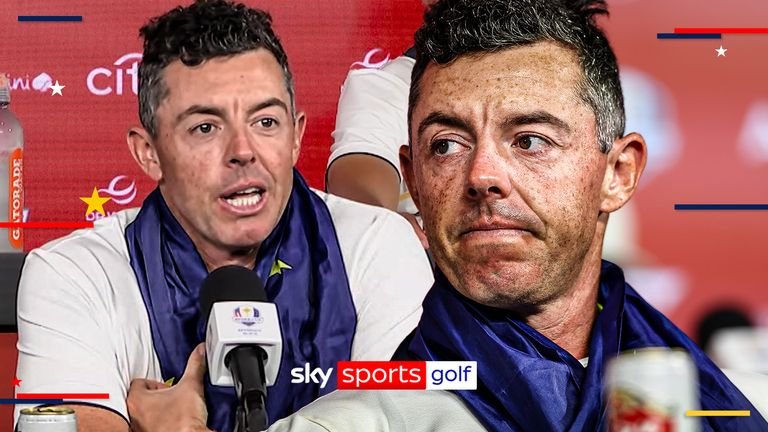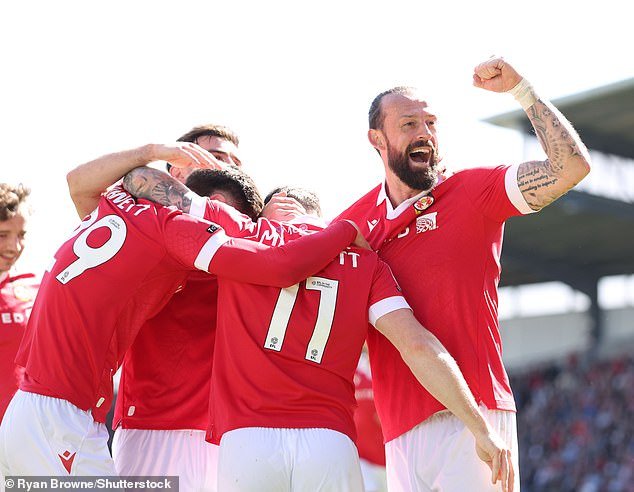We are living in the age of the football prodigy.
At Arsenal, Max Dowman is a regular in Premier League and Champions League squads at the age of 15, following on from Ethan Nwaneri who became the youngest player in English top flight history in 2022 aged 15 years 181 days.
Rio Ngumoha became the youngest player to start a first team game for Liverpool in January (16 years 135 days) and has been a Premier League match-winner for them this season, with Trey Nyoni (who turned 18 in June) also a regular in squads. Bradley Burrowes, meanwhile, was just over 17 when he made his Aston Villa debut last month, while Josh King (18) has been impressing for Fulham.
The prince of the prodigies, of course, is Lamine Yamal, who in April 2023 became the youngest player to debut for Barcelona in the 21st century aged 15 years, 9 months, and 16 days. Since then, he has become one of the club’s top earners, won two La Liga titles, a European Championship with Spain and last week came second in the voting for the Ballon d’Or. In each of the past two seasons, Yamal, who turned 18 in July, has played 50 or more games for his club.
The talent of Yamal and these other prodigies is not in question, and neither is their attitude. Where questions do exist, however, is around the management of their still-developing bodies and how they stand up to the rigours of men’s football.
It is a pointed question. Earlier this month, Yamal was at the centre of a dispute between the Spanish football federation and Barcelona, whose manager Hansi Flick, criticised the national team’s decision to give the teenager painkilling injections so he could play in two World Cup qualifiers.
“I’m very sad about this,” Flick said. “Spain have the best team in the world. The best players in every position, unbelievably good. Maybe when we talk about taking care of young players, it’s things like that. This is not taking care of players.”
Yamal missed four matches for Barcelona since that international break, but came off the bench against Real Sociedad on Sunday and is expected to play for Barcelona in tonight’s Champions League tie with Paris Saint-Germain.
It all underlines the sensitivity of how young players are handled in an industry where the demands for results are unrelenting, and the stakes sky-high.
It is 23 years since Wayne Rooney exploded into the consciousness of football fans by scoring a sensational winner for Everton against Arsenal, five days shy of his 17th birthday. It made him the Premier League’s youngest goalscorer and he looked the part, not only in talent but in physicality.
“There are a lot of good 16-year-olds,” recalled Rooney’s then-manager David Moyes in an interview with the Independent. “But he was one who could cope physically, one who had ability and was growing into everything you recognise in his game.”

Wayne Rooney emerged at Everton as a 16-year-old (Shaun Botterill/Getty Images.)
Rooney is one example of an early-maturer, defined by Dr Sean Cumming, a professor in paediatric exercise science at the University of Bath and internationally recognised as a leading expert on growth and maturation in sports, as “boys who are physically mature, almost like young men at the age of 16 and able to compete against other men”.
But not all 16-year-olds are built that way.
Cumming explains that differences in maturity between individuals can be substantial. Some nine-year-olds may have a biological age of 12 years while other nine-year-olds might only be six or seven biologically. So, within a group of 15 and 16-year-olds, you will naturally observe a lot of variation in their physical maturity.
In 2015, Cumming helped James Bunce, now performance director at Newcastle United, to establish the Premier League’s Growth and Maturation Screening programme as part of their Elite Player Performance Plan. This put systems in place to measure the biological ages of players across the academy system and help clubs to combat a bias towards early maturers that often means talented but late maturing players are filtered out of the system before they’ve had a chance to compete on an even footing.
To ascertain a player’s biological age, the height and date of birth of their biological parents is collected and their height and weight tracked every three months or so. That data is then inputted into a series of age and sex-specific algorithms which gives a prediction of the player’s fully grown height (with the median error of 2.2cm per year for boys). Academies can then express the player’s current height as a percentage of their adult height.
Very early developing boys could be almost complete in terms of their adult height by around 16, says Cumming, who highlights Dowman as one such example. “He might be 15 in terms of calendar years, but physically and biologically he’s more ahead of the game and probably more capable of dealing with the challenges and the stresses of going into adult competition,” he says.
But even though some boys might not be growing any taller at 16, there could be certain parts of their skeleton that are still not fully mature.
“The apophyses are little bony sites where the tendon attaches from the muscle through to the bone,” Cumming adds. “And those sites, which are on the hip and the pelvis, are not going to be fully ossified or fully solid until about maybe 21, 22 years of age in an average boy.”
Really late developers, who might not be fully grown until around 20 or 21, could be 25 before their apophyseal sites are fully ossified.
There’s also the growth plates to consider. These are areas of cartilage at the ends of long bones that allow the bones to grow longer and wider. In an early maturer, most might be fully fused around the age of 16 (18 on average) but in certain parts of the body, such as the hip, that can happen a little later.
Muscle mass also comes later, explains Cumming. “When we grow children it’s almost like we stretch them out first and fill them out afterwards. The peak of the growth spurt (between the ages of 12 and 15 in boys) occurs about six to nine months in advance of peak gains in muscle mass, which will continue to develop.”
With so much variation between individuals, there are understandable concerns about placing young teenagers into adult first-team environments.
On a basic level, there are safeguarding measures in place which restrict things like how players like Dowman, Ngumoha and Burrowes can prepare for training and matches (as they are under 18, they have to change separately from the men). But a greater challenge is how to handle the physical demands placed on them.

Rio Ngumoha (right) and Trey Nyoni (Andrew Powell/Liverpool FC via Getty Images)
Dr Xabi Monasterio Cuenca is a professor at EHU (University of the Basque Country) and consults with Spain’s Athletic Club on growth and maturation research, having spent two years as an academy physiotherapist at the club, where he was responsible for monitoring growth and maturation in the players.
Much of Monasterio’s research has focused on growth and maturation as risk factors for injuries in youth football players and he highlights two key areas when it comes to ensuring the long-term health of these players.
The first relates to players who are alternating between the second team and the first team, or “shifting players” as Monasterio calls them. Research done by the Athletic Club academy showed that these players are at higher risk of sustaining severe injuries. For those who are combining first and second team appearances at the ages of 17 to 19, the risk of anterior cruciate ligament injuries, in particular, seems to increase.
There is no definitive answer as to why but Monasterio lists load monitoring, fatigue and psychosocial factors such as stress as contributing issues.
Having a significant injury at such a critical juncture of a player’s career can destroy their chances of making it as a first-team player. It means, as Monasterio says, that “this step from the academy to the first team has to be done with lots and lots of care”.
Good communication between the first team and the academy is key to ensuring that the load on the player is being closely monitored. But that is not always as straightforward as it should be. In the case of Athletic Club, the first team and academy are in different buildings. For other clubs they might even be in different locations altogether.
The second area Monasterio noted concerns skeletal maturity. As Cumming observed, even though a player might have completed his growth and maturation process by the age of 16 or 17, parts of his skeleton could still be maturing until he is in his early 20s.
The most common growth-related injuries such as Sever’s disease (painful inflammation of the growth plate in the heel) and Osgood-Schlatter disease (pain just below the kneecap caused by irritation of the growth plate at the end of the tibia/shinbone, and which has affected players such as Rooney, Marcus Rashford, Raphael Varane and Jarrad Branthwaite), typically occur in boys aged around 12-14.

Marcus Rashford playing for Manchester United aged 18 (Oli Scarff/AFP via Getty Images)
But there are other growth-related injuries that occur in more mature players, including injuries to the pubis (pubic bone).
“The ossification centres from which the bones develop in the pubis are still working until players are 20 or 22 years old” says Monasterio. “So it is really common to find this kind of injury in players who are 18, 19 or 20 years old, when players are playing professional football already.”
In some cases, these are labelled as muscular injuries but Monasterio warns players at these ages are still skeletally immature in these regions.
Similarly, lumbar bone stress injuries such as pars (a stress fracture to the pars interarticularis, a small segment of bone in the lumbar spine) can also be an issue.
“If these are not treated properly” says Monasterio, “they can lead to more severe injuries such as spondylolisthesis where one of the vertebrae in your spine slips forward, which can lead to chronic lower back pain or even neurological complications.”
Pars injuries typically present in individuals at around 95-96 per cent of their adult stature, at the deceleration point of the adolescent growth spurt, says Cumming. This appears to be a similar point in the growth spurt where hamstring injuries also spike.
“This may be down to the fact that once you’ve gone through puberty, you have a big increase in terms of testosterone,” he says. “All of a sudden muscles have much more capacity to grow bigger and stronger, so there is also a greater likelihood of muscle imbalances.”
So much for the physical problems which can present in younger footballers. What, though, can be done about them?
Monitoring nutrition is vital. A recent study by Chelsea’s performance nutritionist Reuben Stables showed that some academy players, particularly those who were at the peak of their growth spurt, had the same energy demands of a regular first team Premier League footballer.
If they weren’t getting enough energy within the hour before or after a training session they were finding higher levels of bone resorption, meaning that calcium was being lost from the bone.
“Ensuring that players’ nutrition is good since they are really young is super important” says Monasterio, “because the strength of a 20-year-old player’s bones will be determined by not only what he’s eating at the moment but also the whole nutritional progress when he was a youth football player. Promoting healthy nutrition means they have good and strong bones when they reach the first team.”
It also helps that young players are effectively treated as professionals at many leading academies.
The days when youngsters would be sent home at lunchtime, having done a pitch session and some form of athletic development, are long gone, according to Des Ryan, who was head of academy sports medicine and athletic development at Arsenal between 2012 and 2021.
“Now they’re there 9am to 5pm” he says. “They’re doing the preparation session before the pitch session, the athletic development after the pitch section, their performance analysis, their personal development, their education and their technical, tactical work, obviously. They’re taught good nutrition habits and they’re being monitored really closely to make sure they’re not doing too much or too little.”
Those young players in the top academies who are on advanced programs with paediatric specialist coaches, helping them to build strength, power, speed, mobility, stability and endurance, arrive in the early part of the professional phase with a foundation that many of their older team-mates did not have.
“They still have more work to do to maximise their potential, but these days they are at that point earlier” says Ryan, who now consults for Brentford alongside his work as director of sport and physical wellbeing at the University of Galway.

Max Dowman’s progress has been accelerated at Arsenal (Peter Parks/AFP via Getty Images)
During his time at Arsenal, Ryan noticed that when graduates from the academy went up to the first team — he name checks Bukayo Saka, Ainsley Maitland-Niles and Folarin Balogun — they were actually recording the highest power outputs and the most metres in the GPS high intensity outputs.
“They were ready early and at a higher level than a lot of the professionals who were in the game without the advantage of the high level academies that are there now,” he says. “(Former right-back) Hector Bellerin was the first one; he surpassed Theo Walcott’s speed time.”
For Ryan, that is as it should be. “Your aim is to create a higher level player than the first team in the physical sense. It’s harder to do it technically and tactically, so they’re not all surpassing the first team players in the holistic performance on the pitch, but it helps them.”
Is there any risk in a player having more “miles on the clock” at a younger age? Ryan thinks the opposite is more likely. “I think it’ll extend their career. Research shows that the earlier you start, the better outputs in terms of power and speed. Those things are helpful for performance. But they’re also helpful for reducing the risk of injury and for your ability to withstand high workloads.
“A bigger worry for me — for all players — is being able to cope with the amount of matches, the intensity of matches, the frequency of matches. That’s the bigger challenge.”
Dowman was assigned to Ryan’s under-12’s team around the end of Covid. He was an under-11 player moved up an age group because he was an “early developer and high performer” says Ryan. “Even though he’s 15 now, I would estimate he’s really a 16 or 17-year-old player.”
He is certainly deemed older than his years by his manager, Mikel Arteta. “There is a kid here that has zero hesitation and is so convinced that at 15 he can go and deliver, which I have never witnessed in my life,” the Spaniard said after his debut.
Although Ryan believes Dowman’s elevation into senior first-team football at 15 is an anomaly, he is concerned about it happening in environments that are not as prepared for it as a Category One academy, like Arsenal’s.
“Do they have the resources? Do they have the knowledge? Do they have the ability to run a development week when this 16-year-old is in a competitive league every week with two-match weeks?” he asks.

Mikel Arteta has shepherded Dowman’s progress into the Arsenal first team (Stuart MacFarlane/Arsenal FC via Getty Images)
Ryan knows the resources that are needed to create what Arsenal have and struggles to see how some clubs would match it. “The worries I’d have would be: The player is overplayed. The player is in a dressing room, listening to things he shouldn’t be and picking up bad habits, losing that growth mindset of continually developing, neglecting doing the extras and building the foundation.
“If you don’t manage the workload, growth-related injuries could appear. If you don’t lay the foundation, they may struggle in higher level adult football in the future and if you don’t manage the psycho-social development they may become a troublesome player that makes poor decisions from a lifestyle perspective. So things can go wrong in this area, but with the right support things can go well, too.”
Yamal is now well established as the first name on Barcelona’s teamsheet. For youngsters such as Dowman and Ngumoha, who are further behind in their development, the key is patience.
“With good quality managers, it’s managed game time, built over a season or two or three until they’re a regular starter in the first team. But there’s always an exception. Bukayo (Saka) was a slight exception, even though it took two seasons to get into that flow. Maybe Max is similar to Bukayo – even a little bit earlier.”
No matter how many first-team minutes Dowman or Ngumoha get for their respective teams this season, they are still works in progress — both in terms of their football, and their bodies.
(Top photos, from left: Max Dowman, Lamine Yamal, Rio Ngumoha; Getty Images; design: Kelsea Petersen)








